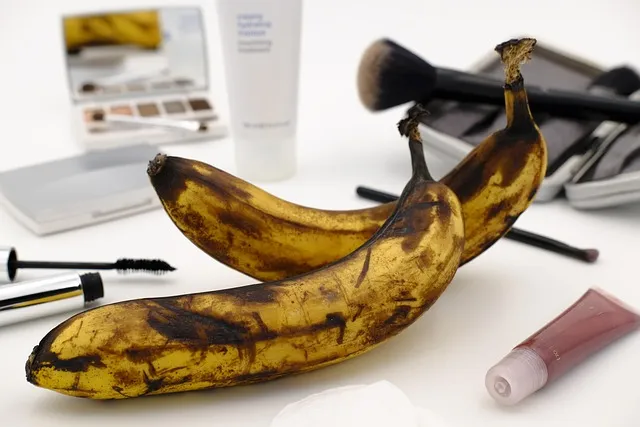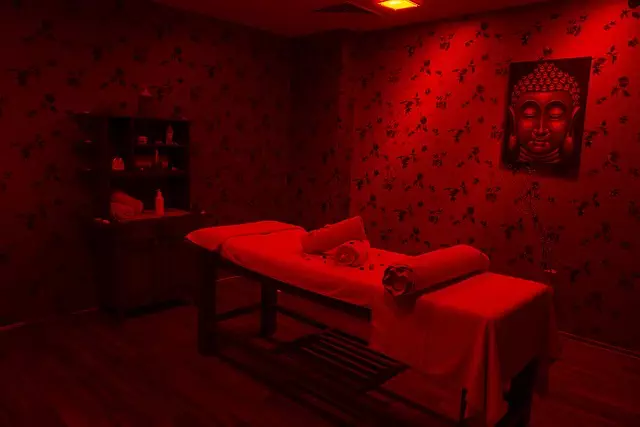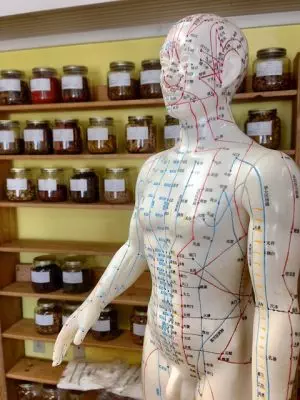Wrinkles result from intrinsic (collagen breakdown) or extrinsic (sun exposure, smoking, facial expressions) factors. Modern anti-aging treatments, leveraging dermatology and cosmetic science, combat environmental damage and stimulate collagen production. Topical creams with retinol, peptides, and vitamin C are popular for consistent skin improvement. Non-invasive methods like microneedling and radiofrequency deliver gradual, natural results with minimal downtime. In-office treatments, such as fractional lasers and chemical peels, offer more intense solutions. Healthy habits, including hydration, diet, exercise, and stress management, also significantly impact skin aging. Advanced technologies like laser and light therapy provide innovative, effective options. Safety is paramount; consulting a qualified professional is crucial before any treatment. Personalized plans, combining active ingredients with a skincare routine, maximize the effectiveness of anti-aging treatments.
“Unwind the mystery behind painless wrinkle treatments and embrace a youthful glow. This comprehensive guide navigates the intricate world of anti-aging, offering insights into various effective strategies. From understanding the science behind wrinkles to exploring advanced technologies like laser therapy, we delve into topicals, non-invasive procedures, and lifestyle shifts.
Discover how to choose the perfect anti-aging treatment plan tailored to your skin’s unique needs, ensuring safety and remarkable results.”
Understanding Wrinkles: Causes and Types

Wrinkles are a natural part of aging, but understanding their causes and types can empower individuals to choose suitable anti-aging treatments. They primarily form due to various intrinsic and extrinsic factors. Intrinsic wrinkles are a result of the natural process of skin aging, where collagen production decreases over time, leading to fine lines and folds. Extrinsically caused wrinkles, on the other hand, stem from external influences such as sun exposure, smoking, and repetitive facial expressions. These external factors accelerate skin aging, causing dynamic wrinkles (created by muscle movement) and static wrinkles (formed due to loss of elasticity). Knowing these distinctions helps in tailoring effective anti-aging treatments.
The Science Behind Anti-Aging Treatments

The science behind anti-aging treatments revolves around understanding and countering the visible signs of skin aging, primarily wrinkles. These signs are a result of various factors, including environmental damage (like UV radiation), lifestyle choices (such as smoking or poor diet), and natural processes like collagen breakdown. Anti-aging treatments aim to address these issues by targeting specific components of the skin’s structure and function.
Modern anti-aging treatments leverage advancements in dermatology and cosmetic science. They often include ingredients that stimulate collagen production, protect against environmental damage, and reduce inflammation. Techniques such as chemical peels, microdermabrasion, and laser therapies also play a significant role by exfoliating dead skin cells and promoting the growth of healthier, younger-looking skin. These treatments offer effective, non-invasive ways to fight wrinkles and enhance overall skin health.
Topical Creams and Serums: Effective Ingredients

Topical creams and serums are a popular choice for those seeking an effective anti-aging treatment. These products are designed to penetrate deep into the skin, delivering potent active ingredients that can reduce the appearance of wrinkles and fine lines. Key ingredients often found in these formulas include retinol, peptides, and vitamin C.
Retinol is a derivative of vitamin A and has been clinically proven to stimulate collagen production, boost cell turnover, and smooth out wrinkles. Peptides, on the other hand, are chains of amino acids that can help to firm and lift the skin, while vitamin C is an antioxidant that protects the skin from environmental damage and promotes even skin tone. When used consistently, these ingredients can provide significant improvements in skin texture and overall youthfulness.
Non-Invasive Procedures: Minimally Invasive Options

Non-invasive procedures have revolutionized the anti-aging treatment landscape, offering safe and effective ways to combat wrinkles without the need for extensive surgeries or downtime. These minimally invasive options utilize advanced technologies to target specific skin concerns, stimulating collagen production and improving skin elasticity. One such method is microneedling, where fine needles create tiny channels in the skin, triggering a natural healing response that results in smoother, more youthful-looking skin. Another popular choice is radiofrequency (RF) treatments, which use targeted heat energy to tighten and lift the skin, reducing the appearance of fine lines and wrinkles.
These non-invasive procedures are often preferred due to their minimal recovery time and high patient satisfaction rates. They are suitable for various skin types and concerns, making them accessible options for those seeking a more gradual and natural approach to anti-aging. With continued advancements in skincare technology, these treatments continue to evolve, ensuring that individuals can age gracefully while maintaining a youthful complexion.
In-Office Treatments: Deeper Penetration

In-office treatments offer a range of anti-aging solutions, providing deeper penetration to effectively target wrinkles from the inside out. These procedures are performed by trained professionals in controlled settings, ensuring safety and optimal results. Technologies like fractional laser treatments, chemical peels, and microdermabrasion are among the popular choices. Fractional lasers, for instance, use precise energy pulses to stimulate collagen production, reducing fine lines and improving skin texture. Chemical peels apply acid solutions to exfoliate layers of skin, eliminating age spots and unevenness while enhancing overall skin tone. Microdermabrasion, on the other hand, uses a special device to gently sand away superficial skin cells and unclog pores, leaving behind smoother, younger-looking skin.
Lifestyle Changes for Youthful Skin

Adopting a healthy lifestyle is one of the most effective anti-aging treatments available. Simple changes can make a significant difference in skin’s appearance and longevity. Staying hydrated by drinking ample water helps flush out toxins and keeps skin supple, reducing the visibility of fine lines and wrinkles. A balanced diet rich in antioxidants from fruits and vegetables feeds the skin, promoting cell regeneration and repairing damage. Regular exercise not only improves overall health but also boosts blood circulation, bringing essential nutrients to the skin for a radiant glow.
Additionally, prioritizing sleep is crucial. During rest, the body produces more of the hormone melatonin, which aids in skin repair and regeneration. Aiming for 7-9 hours of uninterrupted sleep each night can help minimize morning puffiness and dark circles, revealing a more youthful complexion. Stress management techniques like meditation or yoga also play a part by reducing cortisol levels, which, when elevated, can break down collagen, leading to premature aging.
Advanced Technologies: Laser and Light Therapy

Advanced technologies like laser and light therapy have emerged as leading contenders in the realm of anti-aging treatments, offering promising results for those seeking youthful skin. These non-invasive procedures harness the power of light energy to stimulate collagen production and break down damaged skin cells, thereby reducing the appearance of wrinkles and improving overall skin texture.
Laser therapy involves using precise beams of light to target specific skin layers, encouraging cellular regeneration and enhancing elasticity. On the other hand, light therapy, often in the form of intense pulsed light (IPL), emits a range of wavelengths to penetrate the skin and address various age-related concerns, including pigmentation and broken blood vessels. Both methods are considered game changers in the beauty industry, providing effective and relatively painless anti-aging solutions for folks seeking a more modern approach to skincare.
Safety and Side Effects: What to Expect

When considering any skincare treatment, safety is a top priority, especially for anti-aging treatments targeting wrinkles. The good news is that many modern wrinkle treatments have been rigorously tested and are generally considered safe when used as directed by dermatologists or healthcare professionals. However, like any medical procedure, there can be side effects, which vary depending on the type of treatment.
Common side effects include temporary redness, swelling, or mild discomfort at the treatment site. For certain procedures, such as chemical peels or laser treatments, more severe reactions are possible but rare. It’s crucial to discuss potential risks and benefits with a qualified professional before undergoing any anti-aging treatment. They can provide tailored advice based on your skin type, medical history, and desired outcomes, ensuring you’re well-informed about what to expect during and after the procedure.
Choosing the Right Anti-Aging Treatment Plan

When considering an anti-aging treatment plan, it’s crucial to tailor your approach to your specific skin concerns and needs. One-size-fits-all solutions may not deliver the desired results, so consulting a dermatologist or skincare expert is beneficial. They can assess factors like skin type, age, and existing conditions to recommend suitable products and procedures.
Researching active ingredients commonly found in anti-aging treatments is essential. Key players like retinol, hyaluronic acid, and vitamin C offer powerful benefits, including reducing fine lines, improving texture, and brightening the complexion. Combining these with a consistent skincare routine will enhance the overall effectiveness of your chosen anti-aging treatment plan.
